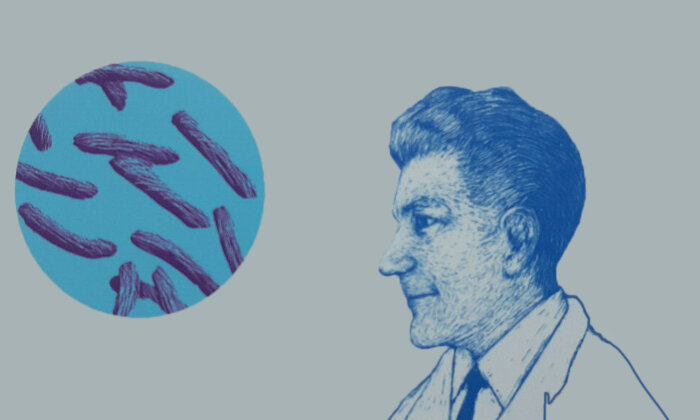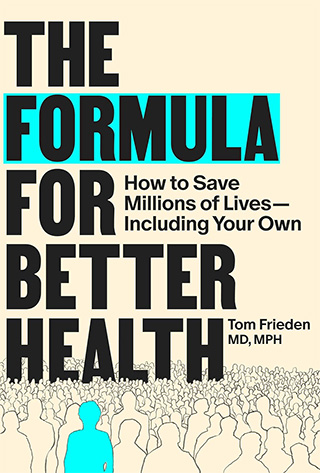One of the Most Important Scientists You've Never Heard Of

One of the most important scientists you’ve never heard of is Dr. Karel Styblo.
Styblo had a profound grasp of tuberculosis, in part because he survived it. He contracted tuberculosis while imprisoned at the Mauthausen-Gusen concentration camp in Austria in 1944. After the war and over the next 40 years, as a doctor and epidemiologist, Styblo studied tuberculosis and learned to orchestrate all three parts of what I call the formula: See invisible threats, believe change is possible, and create systematic solutions. It was only while writing “The Formula for Better Health” that I fully grasped the depth of his insights and his far-reaching impact.

I previously wrote about the single question he asked me that changed my life. I had handed him a detailed report about tuberculosis in New York City, and when he asked me how many patients we had cured, I didn’t know the answer. The report detailed all who were diagnosed and treated, but not who had actually been cured. I was terribly ashamed. That simple question — Of the 3,811 patients with tuberculosis diagnosed in New York City last year, how many did you cure? — changed how I’ve thought and worked ever since. Styblo’s laser-like focus on outcomes underpins much of his systems and work.
Styblo’s genius is both scientific and practical. He studied tuberculosis and learned to orchestrate all three parts of the formula. He saw invisible trends. He established the concept of a technical package based on scientific and practical rigor. After a decade in Tanzania, he developed a powerful information system capable of transforming health care. He understood how tuberculosis spreads among people — and, even more importantly, how to scale a control program to reach an entire country.
Styblo’s tuberculosis control system has improved diagnosis, treatment, and monitoring of more than a 100 million patients.
One of my most memorable conversations with Styblo took place over a lunch of dumplings and vegetables in New York’s Chinatown in January of 1993. This was the height of New York’s outbreak of multidrug-resistant tuberculosis. Drawing on a napkin, he explained how R0 — pronounced “R naught,” the average number of people one infected person will infect — applies to tuberculosis.
“So you see,” Styblo concluded, “the tuberculosis bacteria is doomed.”
He explained that each tuberculosis patient, even without treatment, infects on average fifteen people. Of those 15, 10 percent, or, on average, 1.5, develop tuberculosis. But of those, only half are highly infectious, so each case results, on average, in 0.75 cases likely to further spread the disease.
“So you see,” Styblo concluded, “the tuberculosis bacteria is doomed. It will disappear. But that will take two or three hundred years. Our job is to make it disappear faster.” He seemed almost wistful when he said this, as if he sympathized with his lifelong enemy, the tuberculosis bacteria.
That is the goal: to make diseases such as tuberculosis a thing of the past. And his methods have allowed us, and will continue to allow us, to accelerate this process.
In 1993, after WHO launched DOTS, the technical package developed by Styblo, tuberculosis deaths decreased by 60 percent. The concept of a technical package is powerful. DOTS has saved more than 30 million lives.
According to the World Health Organization:
The role of Dr Karel Styblo, IUAT Scientific Director, in the development of these innovative programmes cannot be understated. He combined an astonishing knowledge of the epidemiology of TB with a remarkable understanding of the management principles of TB control and a tenacious commitment to excellence in his work. His contribution to TB was immense, and he will go down in history as the father of modern TB control and one of the heroes of public health of the 20th century. The principles developed by him in Africa were later adapted and promoted by WHO as DOTS, and adopted in places as diverse as China, New York, and India.
Styblo’s system now operates in more than 150 countries, and has improved diagnosis, treatment, and monitoring for over 100 million patients. His technical package concept extends beyond tuberculosis. In collaboration with WHO, my organization Resolve to Save Lives adapted Styblo’s approach to hypertension control, now used in more than 40 countries.
Styblo’s principles of simplicity, accountability, phased expansion, and systematic monitoring continue to transform public health worldwide, even though few people know his name.
Tom Frieden helped stop deadly outbreaks in New York City, directed the CDC under President Obama while leading the agency’s response to Ebola and other threats, and is now CEO of Resolve to Save Lives, a global organization that partners with countries to prevent millions of deaths. He is the author of “The Formula for Better Health.”
This article first appeared on Frieden’s Substack, The Formula.



